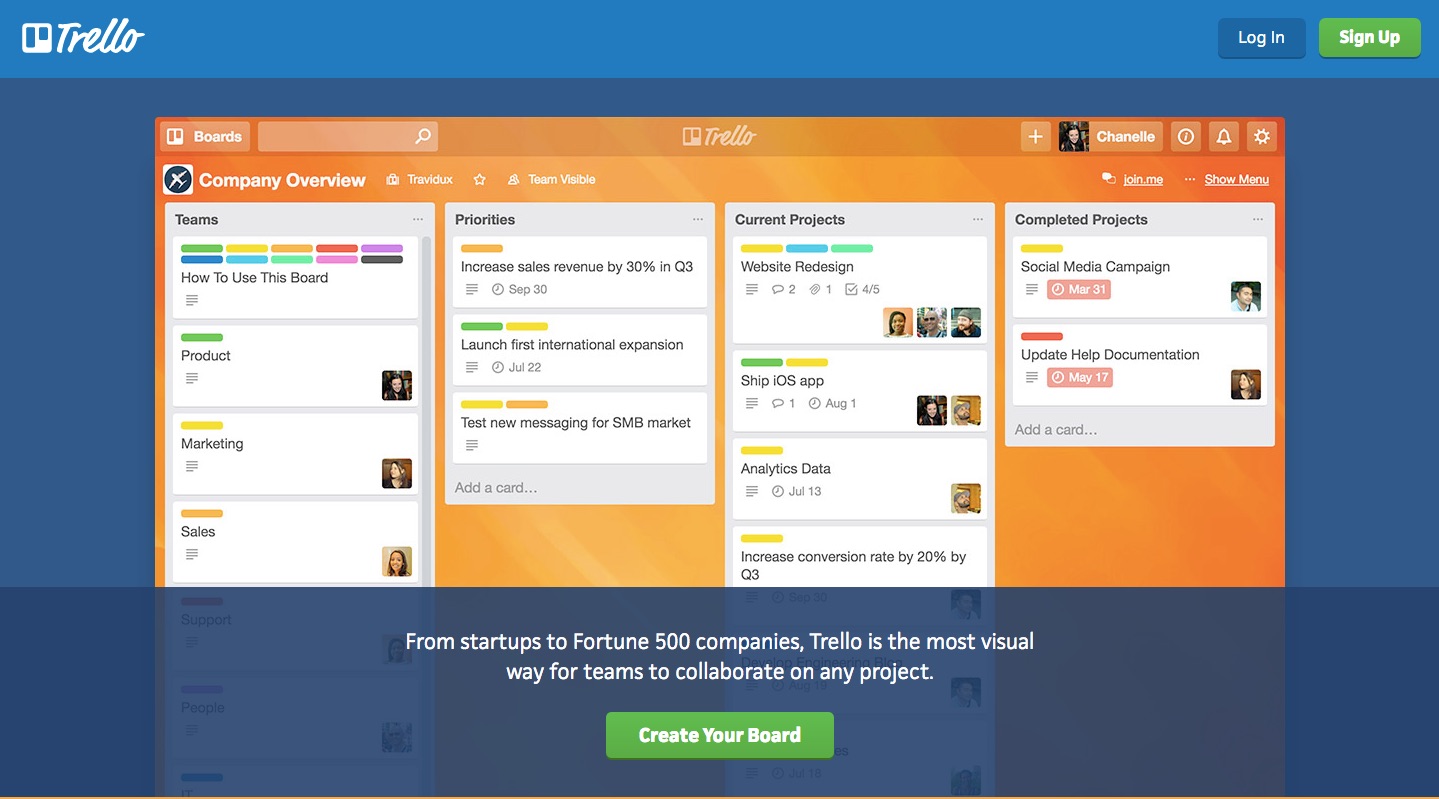For all the powerful processing work the human mind can do, it's still prone to making bizarre assumptions and jumping to illogical conclusions. Unfortunately, we don't usually recognize these patterns as strange. Since they're unconscious, they seem normal.
Like it or not, these biases are part of us, so those in the business of persuasion can benefit from learning how to spot and play to them.
The psychological biases below relate to decision making. They can help you understand why you make the choices you do, and each has a sales takeaway to help reps use these brain quirks to sell better.
Psychological Biases
- Ambiguity Effect
- Anchoring Effect
- Backfire Effect
- Hyperbolic Discounting
- Bandwagon Effect
- Decoy Effect
- Rhyme-As-Reason Effect
- IKEA Effect
- Illusory Truth Effect
- Peak-End Rule
- Loss Aversion
- Status Quo Effect
- Bizarreness Effect
- Empathy Gap
- Halo Effect
- Optimism Bias
- Sunk Cost Fallacy
- Confirmation Bias
- Clustering Illusion
- Planning Fallacy
- Curse of Knowledge
- Galatea Effect
- Choice Bias
- Recency Bias
- Gambler's Fallacy
- Hot Hand Fallacy
1) Ambiguity Effect
Imagine you had two lunch choices. You could either visit a place you know and like -- although it isn't your favorite -- or somewhere completely random. This second restaurant could be great, but it could also be awful.
Which would you choose? If your brain works like most people's, you'd probably go for the first option rather than risk an unpleasant midday meal.
The ambiguity effect causes people to avoid options whose results are unknown or untested. Now you can tell your friends there's a scientific reason venturing away from your tried-and-true restaurant is hard.
Sales takeaway: Make sure buyers are informed about what results they can expect if they implement your product and quickly answer questions or fill in knowledge gaps they might have.
2) Anchoring Effect
It's often said you shouldn't judge a book by its cover. Too bad that our brains are hard-wired to do just that.
Whether for good or for bad, the first piece of information we receive about a person or situation colors our overall perception. Why? The initial detail acts as an anchor -- one which all further information is compared to and viewed against.
Sales takeaway: First impressions matter. Carefully plan out how you will introduce yourself and your product. Make sure the first details the buyer receives about your offering set a positive tone and high expectation for the rest of the buying process.
3) Backfire Effect
When you’re talking to someone with a deeply held belief, presenting them with facts that clearly contradict that belief won’t change their mind.
In fact, thanks to the backfire effect, they’ll actually be more convinced they’re right. Debating the truth of your statement with you pushes them further toward the side they already favor.
Sales takeaway: When prospects hold a false opinion, don’t directly challenge them with conflicting information. Instead, ask them to explain their reasoning. They’ll discover the holes in their argument by themselves.
4) Hyperbolic Discounting
Offer a toddler a candy bar now, or two tomorrow, and you'll see hyperbolic discounting in action. Now is always better than later. You probably won't even finish your sentence before they latch on to the treat and gobble it down.
Turns out, this phenomenon still influences adults. Our brains are naturally drawn toward rewards in the short-term over those in the long-term. The "discounting" part of hyperbolic discounting refers to the fact that the perceived value of a reward decreases the farther it is in the future.
Sales takeaway: Emphasize the quick wins a customer can expect to see shortly after buying your product or service -- especially if the main benefit won't come for months.
5) Bandwagon Effect
Beanie Babies. Pet rocks. Troll dolls. Looking back, these toy fads seem kind of silly. But did you buy or have one? Well, yeah, "Everybody else was doing it ..."
No need to feel ashamed -- there's a reason you hopped on the trend. People naturally gravitate towards products or services they see other people using. And the larger the crowd, the more powerful the psychological pull.
Sales takeaway: Social proof is more powerful than you might think. Highlight the number of customers your company has and introduce prospects to current clients.
6) Decoy Effect
Are you having trouble deciding between two choices? Maybe adding a third will help.
Huh? My sentiments exactly. The decoy effect is irrational, but it's been scientifically proven.
In a study conducted by Duke University, a researcher gave participants two dining choices: A five-star restaurant that was far away or a three-star venue that was nearby. The diners were torn. But after introducing a third possibility -- a four-star restaurant even farther away than the five-star -- suddenly it was easy to choose the five-star option. It was the best quality, and only moderately far away when compared with the third choice.
Sales takeaway: Use options to your advantage by presenting multiple versions of an offering or contract. If the prospect is really struggling to decide, introduce a decoy that will reinforce their innate predisposition.
7) Rhyme-As-Reason Effect
"If it doesn't fit, you must acquit." With this simple couplet, Johnnie Cochran cemented his defense of O.J. Simpson to the jury during the former football player's infamous 1994 murder trial.
While rhymes are naturally easier to remember, Cochran could also have been exploiting the rhyme-as-reason bias. This psychological quirk causes people to perceive rhyming statements as more truthful than non-rhyming ones containing the exact same message. It pays to be a poet -- and now you know it.
Sales takeaway: Reformulate your value proposition or a key takeaway about your product into a catchy rhyme. It can also help to apply this tactic to an aspect of your offering that is dubious or unclear.
8) IKEA Effect
There's no avoiding the inevitable confusion when trying to decode assembly instructions from the Swedish furniture outlet, but that's not what this bias is about.
Instead, the IKEA effect refers to the fact that people value things they had a hand in creating more than similar -- or even superior -- products created by others. While this effect can be disadvantageous for creators (ownership of the project could make them blind to flaws), salespeople can use it to their benefit.
Sales takeaway: Get prospects involved in customizing or putting their unique spin on your product or service. The more they feel like the offering is "theirs," the more positively they will feel towards it.
9) Illusory Truth Effect
How do hypnotists put people to sleep? At least in movies, they repeat over and over, "You're getting sleepy ... so sleepy ... " At first, the patient's eyes are wide open, but eventually their eyelids begin to flutter, and ultimately close. What happened?
One possible explanation is the illusory truth effect -- which suggest frequency leads to belief. In other words, you're more likely to believe a statement you've heard 10 times than five.
"Repetition is one of the easiest and most widespread methods of persuasion," explains Dr. Jeremy Dean.
Sales takeaway: Determine your core message, and then deliver it multiple times.
10) Peak-End Rule
It's not just first impressions that matter: Speakers often strive to end on a high note. Why? Because people's brains are wired to seize onto two moments of a presentation: The apex, and the end.
For instance, if you were to attend a mostly boring movie with a fantastic ending and a single stellar scene, this bias holds that you would remember it more favorably than another movie that was good throughout, but never extraordinary.
Sales takeaway: Make sure that sales presentations hit a deliberate high, and end on a thought-provoking and memorable point. If you're pressed for time, skew your preparation efforts to the ending and a critical moment rather than spending an equal amount of time on the entire presentation.
11) Loss Aversion
With the exception of serial gamblers, most people's brains are risk-averse. Losing something that is already owned has been shown to be far more painful than gaining something advantageous is pleasing. And this knowledge can be valuable when framing product benefits and other sales messaging.
Sales takeaway: Emotions are powerful motivators. Depending on what you sell, play up what prospects stand to lose by sticking with the entrenched status quo (another cognitive bias). They'll be more willing to take a risk if they feel that something they own is at stake.
12) Status Quo Bias
You’ve probably heard if you put a frog in a pot of water and gradually increase the water’s temperature to boiling levels, the frog won’t jump out. People often act the same way: Because they have a strong preference for the status quo, they ignore slowly building threats or danger.
The status quo is so sticky because it’s far easier to maintain your current situation than take action. And, thanks to the ambiguity effect (see #1 on this list), known options are more attractive than unknown ones.
Sales takeaway: This bias explains why nearly one quarter of forecast deals end in “no decision.” There are two major strategies you can use to avoid this outcome. If you’re the only supplier the buyer is evaluating, thoroughly educate them on their business pain.
However, if they’re choosing between multiple vendors, it’s clear they’ve recognized their challenges. Make sure they understand the costs of inaction so they're not tempted to leave this problem alone.
13) Bizarreness Effect
It’s easier to remember unusual or unexpected information than common information. Think about it.
If I ask whether you remember what happened in the Game of Thrones episode, "The Rains of Castamere," you'd likely draw a blank. If I asked you what happened in the Game of Thrones episode with "The Red Wedding," you immediately remember the episode, what happened, and your reaction to it (utter devastation). This is the bizarreness effect.
Sales takeaway: You don't want prospects to think of your product/service like they do the red wedding -- but you can make your pitch more memorable by starting with a surprising fact or story.
For instance, a rep selling virtual meetings software might say, “If you’re looking for a way to boost your team’s efficiency and increase their job satisfaction, try offering work-from-home privileges. People are 69% more productive when they work remotely.”
14) Empathy Gap
People subconsciously believe what they’re feeling at the moment is how they’ll always feel. If they’re calm, it’s hard to imagine feeling anxious, and vice versa. If you can anticipate and guide conversations with this in mind, you'll be a more empathetic listener and a better salesperson.
Sales takeaway: This phenomenon helps explain why the status quo, not your competition, is your biggest enemy. Prospects don’t typically make “nice-to-have” purchases: They buy because they’re nervous about what will happen if they don’t.
Reps should never manufacture false fear -- but if there’s true need, it’s your job to uncover it and then lead the buyer to acknowledge the negative impacts of inaction.
15) Halo Effect
If the buyer has a positive impression of the rep, she’s much likelier to have a positive impression of the rep’s product and company.
The opposite is true as well: A poor opinion of the rep makes her think poorly of the product and company. Keep this in mind next time you're hiring -- or letting a bad day bleed into your phone calls.
Sales takeaway: A salesperson might have an amazing product at a competitive price point -- but unless she’s likeable, her prospects probably won’t think much of what she’s offering.
Reps should strive to create genuine connections with every buyer, which usually requires doing research, understanding their persona, and taking an “Always Be Helping” approach.
16) Optimism Bias
We’re wired to believe the future will be better than the past or present.
The optimism bias can both help and hurt salespeople. On one hand, helping prospects envision a better future can be highly effective. On the other, prospects are often irrationally optimistic -- even if they’re in pain right now, they might expect the situation to resolve itself (or at least stay the same).
Sales takeaway: To make sure buyers are optimistic about the right things, salespeople should describe two scenarios: Life with their product, and life without it. This thought exercise will help prospects overcome any unrealistic beliefs.
It’s also important for reps to manage their prospects’ expectations around when they’ll see results. Some products don’t begin paying for themselves for months or even years down the line -- which can make buyers disappointed and frustrated if they’re expecting immediate gains.
Prospects may also expect the hard work to be done once they’ve finished the buying process. But for products with complex or lengthy implementations, there’s far more to be done. Salespeople can make sure buyers aren’t wearing blinders by clearly and accurately explaining what will happen after they sign the agreement.
17) Sunk Cost Fallacy
Once someone has invested time, energy, or money into an activity or decision, they’re irrationally committed to finishing it.
Consider how many of us watched five seasons of Lost before realizing it was going to end badly and wanting to bale. But how many of us actually stopped watching? We knew there were only two more seasons left -- and we had devoted so many hours to watching, theorizing, and obsessing about the first five seasons. We'd given up too much to quit.
Sales takeaway: To increase buyer commitment, salespeople should ask for a series of small commitments.
Here’s a sample sequence:
-
Before the first meeting: Send preliminary questions for the prospect to review.
-
Before the second meeting: Email relevant materials and ask the prospect to look them over.
-
After the second meeting: Ask the prospect to complete a small task, like moving data into the free version of your software product or completing an audit of their current process that relates to your product.
By gradually upping your prospect’s commitment, you'll make buying seem like a foregone conclusion.
18) Confirmation Bias
Confirmation bias is interpreting information in a way that confirms what you already believe.
Sales reps can fall victim to this bias if they ask prospects leading questions in search of a specific answer.
For example, if a rep thinks a prospect could benefit from new onboarding software, they might ask, “Would you like to get your new employees producing better results, faster?” Of course the answer is yes, but that doesn’t confirm the prospect needs new onboarding software.
Sales takeaway: While it’s helpful to have research-backed assumptions prior to talking to a prospect, reps must be open to new information and admit when their educated guess are incorrect.
19) Clustering Illusion
When you notice a pattern in a completely random series of events, you’ve fallen for the clustering illusion.
In sales, this might look like a rep who successfully uses a specific strategy -- then uses that technique in every sale going forward. This bias is likely how the sales script came to life: If it worked with one prospect, the thinking goes, it will work with all of them.
Sales takeaway: While a pattern of success with a few prospects is great, it shouldn’t drastically influence how you approach every prospect going forward. Having a one-size-fits-all mentality will result in more lost prospects than won deals. Keeping outreach personal and specific allows reps to connect with prospects in a genuine way and provide significant value.
20) Planning Fallacy
The planning fallacy occurs when you drastically underestimate how much time you need to complete a task.
When a call goes well after a salesperson does limited work prior to picking up the phone, they can fall into the trap of thinking this is all the time they need to be successful. The planning fallacy seduces reps into doing the minimum amount of work while still expecting good results.
Sales takeaway: Providing yourself ample time for tasks is key to success. Instead of doing the minimum and believing you’ll see maximum results, you should set aside a significant amount of time for every task to ensure you’re doing the best job possible.
21) Curse of Knowledge
The curse of knowledge is when you’re unable to relate to an uninformed person’s problems because you have better information.
Sales reps who know their product can benefit a prospect might fall prey to this bias by dismissing a prospect’s objections. Instead of listening to these reservations and taking time to explain points of confusion, this bias causes reps to revert to, “But it works! Trust me!”
Sales takeaway: Instead of insisting that the product addresses your prospect’s concern, act as a trusted advisor. Reps can handle objections through sound reasoning, customer reviews, and testimonials -- but the key is education.
If your prospects are still asking questions disguised as objections, they don’t understand your product’s value well enough. They aren't interested in whether the product works, they want to know how it will work for them.
22) Galatea Effect
The Galatea effect states if you believe you’re going to be a top performer, you’ll actually become one.
The Galatea effect rears its head when a rep believes they were solely responsible for winning -- or losing -- a deal. After a deal goes bad, a rep can start to question their skills, which leads to worse performance. On the other hand, if a call goes well, a confidence boost can be the foundation for a hot streak.
Sales takeaway: To overcome this bias, examine your calls and listen to coaching from your manager to remain objective. And consider you might not have played a major role in your prospect's decision. There are many other factors that influence a prospect’s choice to buy or not.
23) Choice Bias
The choice bias leads us to retroactively view our past choices in a positive light while overemphasizing negative attributes of options we didn’t select.
In sales, choice bias impacts your response to making a mistake. If a prospect turns out to be a bad fit, the bias influences the speed at which you come to terms with the mistake. It also protects you from being too hard on yourself, because you’re likely to remember the positives and look past the negatives.
Sales takeaway: In order to be successful, make sure you pay attention to all relevant, emerging information. Instead of assuming every decision you make is great, recognize when things haven’t gone the way you expected. Learning from your mistakes is a powerful tool.
24) Recency Bias
Recency bias is the tendency to believe patterns that have recently emerged are likely to continue in the future even if they contradict long-term data.
If a rep notices commonalities in their last five deals and abandons time-tested strategies, they’ve fallen for the recency bias. New data is exciting, but it could be an outlier. A larger sample size -- the rep’s history over several months -- is likely to be more accurate.
Sales takeaway: If commonalities continue over time, use these new insights in sales conversations going forward. Gut decisions have no place in modern sales; the data should speak for itself.
25) Gambler’s Fallacy
The gambler’s fallacy is the belief that an event is less likely in the future because it’s happening often in the present, even if the outcome of one event has no statistical impact on future ones.
After a rep has four or five bad calls, they might think their next one will go better because things will average out. But they’ve failed to realize that their previous calls have no impact on their upcoming one.
Sales takeaway: This bias is dangerous because it can cause salespeople to expect their luck to change without any behavioral changes on their part.
Avoid falling prey to this fallacy by digging deeper to understand why calls went poorly and adjusting your strategy accordingly. Instead of trying the same thing over and over, changing tactics can put an end to the bad streak.
26) Hot Hand Fallacy
The inverse of the gambler’s fallacy is the hot hand fallacy -- the mistaken belief that if you succeed (or fail) at a random event in the present, you’re likely to have more success (or failure) in the future because of it.
When a rep closes several deals in a row and concludes that every call he makes going forward will be easy, he’s succumbed to the hot hand fallacy. These deals are closing because of hard work put in over the last few weeks, not because the rep is “heating up.”
Sales takeaway: Ultimately, it’s sales fundamentals that affect a rep’s success. Prospects convert because of hard work, research, and a great relationship, not because the rep is on a hot streak.







































 What are chatbots for? I asked Zo, Microsoft’s officially launched chatbot, currently available on the Kik Messenger app, what she does — and she was remarkably coy in answering this question, initially complaining that our conversation felt like a job interview and then qualifying this hugely with the intimate confession that “our convos give my life purpose tbh”.
What are chatbots for? I asked Zo, Microsoft’s officially launched chatbot, currently available on the Kik Messenger app, what she does — and she was remarkably coy in answering this question, initially complaining that our conversation felt like a job interview and then qualifying this hugely with the intimate confession that “our convos give my life purpose tbh”.  After a potential customer has first contact with a business, sales gets in gear, often responding with an introductory email. Conversica has developed an artificial intelligence system designed to automate these early contact emails, and pass it off to a human salesperson when the time is right. Today, it announced a $30 million investment.
The round was led by Providence Strategic Growth.
After a potential customer has first contact with a business, sales gets in gear, often responding with an introductory email. Conversica has developed an artificial intelligence system designed to automate these early contact emails, and pass it off to a human salesperson when the time is right. Today, it announced a $30 million investment.
The round was led by Providence Strategic Growth. 





















